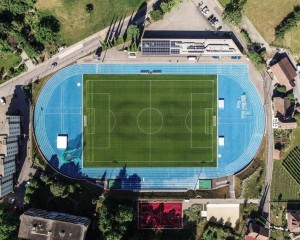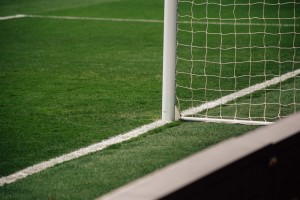The History of Football Pitch Line Markings
Line Marking
Football is one of the most internationally popular sports, being played in over 200 countries. It is one of the oldest sports with a rich history dating all the way back to 1863, where its official beginning is believed to be. Throughout history there are various citations of a sport similar to modern day football, from Italy to France; many European countries claim to have played a form of football, but its most noted birthplace is of course England.
Dimensions
Football’s iconic pitch is renowned all over the world, but it didn’t always have the same universal look, some pitches were almost 200m in length! The rectangular pitch is now 90-120m long and 45-90m wide. Originally line markings were much more speculative than format, too. Pitches now have pristine white lines marked onto the ground to show the full boundaries of the game, along with netted goals as opposed to what their predecessor had, which was two bushes placed to mark the goal line. Matching line markings, goal posts must be white and made of wood, metal or other approved materials, but the goal posts didn’t develop the classic ‘crossbar’ until 1875.
Area markings have also changed shape over the years with the goal and penalty areas marked as half circles until 1902. With the boom of football’s adoration, the demand for accurate and pristine pitches has grown. Lines are painted with expert line marking equipment, as the turf itself is kept to exceptional standards under the watchful eyes of qualified groundskeepers.
Heated Pitches
The weather now influences the condition of pitches less, as technological advancements have brought forth heaters below the turf, reducing the risk of the pitch freezing over. Further developments have also seen the rise of artificial pitches; the hybrid cross-over between artificial and natural turf makes a more hard-wearing surface that is less susceptible to the usual wear and tear.
All adult pitches must align with guidelines as set by the IFAB (International Football Association Board). The IFAB was formed in 1886 under the pretence of unifying the differing rules and regulations across England, Ireland, Scotland and Wales.
Referee Technology
As well as the various improvements to pitches, those who police the rules of the ‘beautiful game’ are now under review, with the imminent introduction of virtual tools available to referees. Goal line technology offers confirmation as to whether a ball has passed the line and entered the goal or not. VAR (Video Assistant Referee) allows the referee to review decisions with the help of video footage. Although these technologies allow the game to be more accurate, they have been met with plenty of criticism; many believe that they widen the gap between modern football and the pure roots of the sport.
From grass root beginnings to packed out high-tech stadiums, football is an ever-evolving sport. There are, however, many features still prevalent within the modern game, from the traditionally painted lines to the striking green fields, loved by many. Football endeavours to be the world’s most-loved sport with billions of fans from all walks of life.
If you are looking for line marking technology for business or pleasure, then check out the Bowcom site.
Author Information:
Bowcom is a leading line marking company, with over 30 years in the industry. Check out their full list of line marking applicators.











